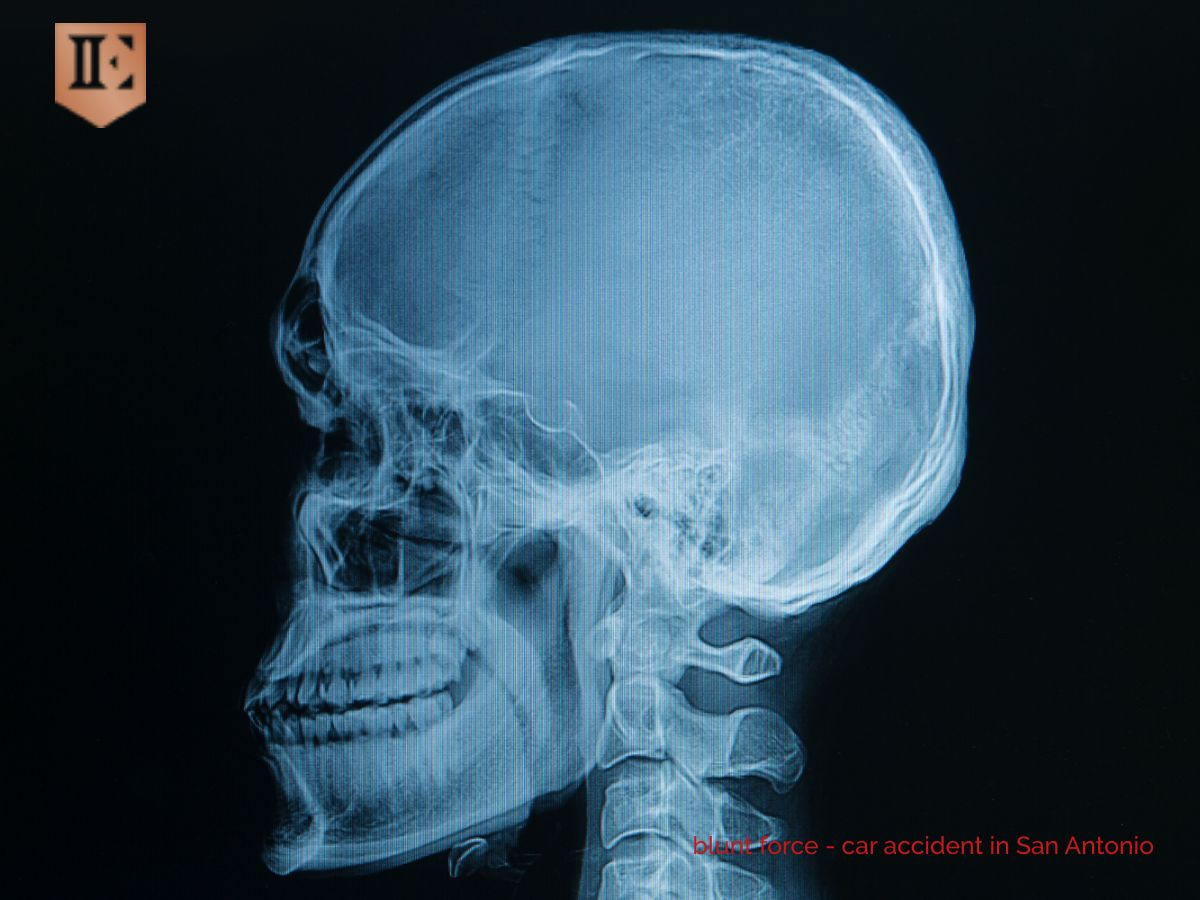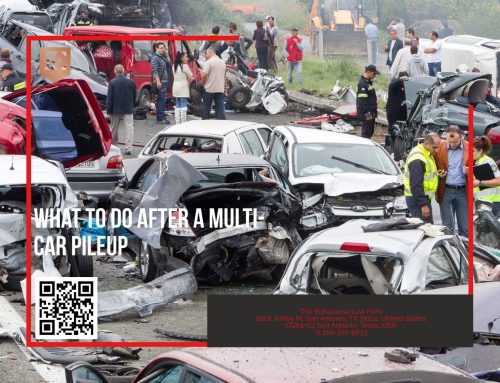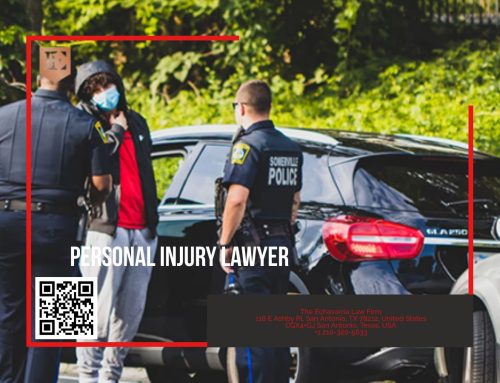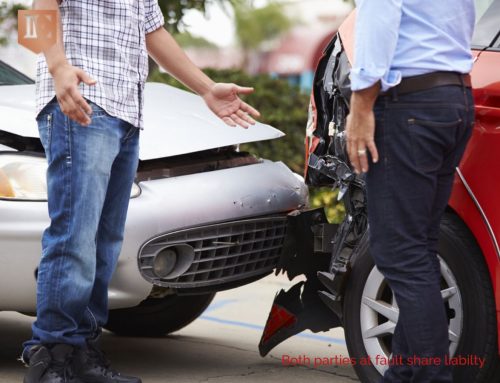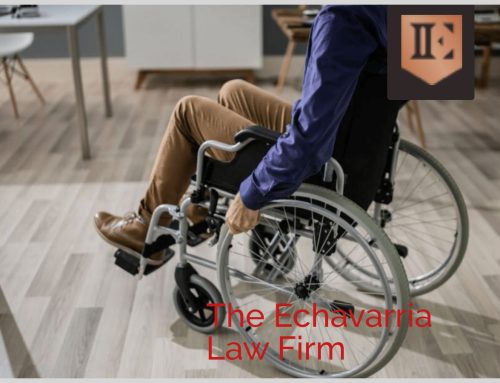causes, signs, symptoms, diagnosis, treatment options, and prevention methods for this type of trauma is crucial for everyone, from drivers and passengers to healthcare professionals.
Get Car injury legal help now! The Echavarria Law Firm negotiates with insurance firms, secures compensation for serious motor vehicle crash injuries, personal injury issues, and holds driver accountable. Get a free case evaluation—call 210-320-5633 or visit us online. We ensure catastrophic injury victims geta level of service and ensure fair financial compensation are covered by insurance providers.
In this comprehensive guide, we will delve into the specifics of blunt force trauma to the head, shedding light on the mechanisms by which car accidents can lead to such injuries. We will also explore the common signs and symptoms, diagnostic procedures, available treatment options, and preventive measures.
Whether you are a concerned individual seeking information or a medical professional looking to expand your knowledge, this article aims to provide valuable insights into a critical aspect of head injury resulting from car accidents. So, let’s begin our exploration of this important topic.
What Is Blunt Force Trauma To The Head?
Blunt force trauma to the head refers to the physical impact or injury sustained on the head due to a powerful, non-penetrating force, often associated with car accidents and falls. It can lead to various severe head injuries, including traumatic brain injury, fractures, and internal bleeding, requiring immediate medical attention.
When the head experiences the force of sudden deceleration, such as during a car crash, the brain can become injured as it collides with the inner walls of the skull, resulting in traumatic brain injury (TBI). Fractures to the skull or facial bones are common outcomes which can lead to secondary injuries, like bleeding or swelling within the brain.
The sudden force can cause the brain to twist and turn within the skull, contributing to diffuse axonal injury, where the nerve fibers in the brain are stretched, torn, or damaged, leading to serious neurological deficits.
How Does A Car Accident Cause Blunt Force Trauma To The Head?
A car accident can cause blunt force trauma to the head when the occupants experience a sudden, high-impact collision, leading to severe injuries such as traumatic brain injury, blunt chest trauma, and neck compression. The force generated during the crash can result in immediate head trauma, often necessitating medical attention and legal assistance for compensation.
When a vehicle collides or suddenly stops, the inertia of the occupants’ bodies causes them to continue moving until they hit something inside the car or are ejected from it. This abrupt deceleration or impact can lead to devastating head injuries, as the brain is thrust against the skull, resulting in physical damage and potential internal bleeding.
The injury patterns from blunt force trauma in car accidents are diverse, ranging from skull fractures and lacerations to coup-contrecoup injuries caused by the brain slamming into the opposite side of the skull. These injuries can have long-term consequences, affecting cognitive functions, motor skills, and emotional well-being.
In the context of compensation, understanding the mechanics of blunt force trauma in car accidents is crucial for legal proceedings. Documenting the injury patterns and the implications on the victim’s life can aid in building a strong case for seeking adequate compensation for medical expenses, rehabilitation, and loss of income.
What Are The Signs And Symptoms Of Blunt Force Trauma To The Head?
The signs and symptoms of blunt force trauma to the head can manifest in various ways, including headaches, nausea, loss of consciousness, dizziness, memory loss, changes in vision, hearing, or smell, and mood alterations. These indicators often point to severe head injuries and trauma experienced by the victim, necessitating immediate medical attention and comprehensive care.
Victims of blunt force trauma may exhibit physical signs such as swelling, bruising, or lacerations on the head, as well as potential abnormalities in motor functions, such as difficulty balancing or walking. It’s crucial to recognize the emotional and cognitive impact, such as confusion, irritability, depression, or anxiety, which can significantly affect the victim’s quality of life.
Certain symptoms, like ongoing vomiting, unequal pupil size, or seizures, demand urgent medical intervention, underscoring the urgency and complexity of addressing head trauma.
Headache
Headache is a common and distressing symptom experienced by individuals who have suffered blunt force trauma to the head, often indicating underlying injuries that require medical evaluation and treatment.
When an individual experiences a headache following blunt force trauma to the head, it can be a sign of various injuries, including concussions, scalp wounds, or internal bleeding. The prevalence of headaches in such cases underscores the importance of prompt medical attention to assess the extent of the injury and initiate appropriate treatment.
Victims of blunt force trauma may find the constant throbbing or sharp pain of a headache to be especially debilitating, impacting their daily activities and quality of life.
Nausea and Vomiting
Nausea and vomiting are common manifestations of blunt force trauma to the head, often signaling the severity of head injuries and the need for immediate medical attention and intervention.
These symptoms can arise from the brain’s response to the injury, causing a disturbance in the body’s equilibrium. The impact of the trauma can stimulate the vomiting center in the brain, resulting in persistent nausea and vomiting. They may indicate underlying issues such as brain swelling, bleeding, or concussion, all of which require prompt medical assessment and treatment.
Loss of Consciousness
Loss of consciousness is a critical symptom following blunt force trauma to the head, indicating the potential severity of head injuries and the immediate need for medical attention and evaluation.
When an individual experiences loss of consciousness after a head injury, it serves as a significant indicator of the impact on the brain and neurological function. This symptom suggests that the force of the trauma was substantial enough to disrupt normal brain activity, potentially causing internal bleeding, swelling, or other serious damage.
- Understanding the significance of loss of consciousness can alert individuals to the potential gravity of the situation, prompting them to seek urgent medical care to mitigate the risks of further complications.
- It highlights the necessity of thorough medical evaluation to accurately assess the extent of the injury and determine the appropriate course of treatment, often involving imaging tests and neurological examinations.
Dizziness and Balance Problems
Dizziness and balance problems often accompany blunt force trauma to the head, serving as significant indicators of underlying head injuries and the need for comprehensive medical assessment and treatment.
The symptoms of dizziness and balance problems after a head injury can manifest in various ways, including feeling lightheaded, unsteady, or experiencing vertigo. Individuals may also have trouble standing or walking, and they could experience a sensation of spinning or swaying. These symptoms are crucial indicators of the potential severity of the head trauma and should not be overlooked. Seeking immediate medical attention is essential to evaluate the extent of the injury and provide appropriate treatment to prevent further complications.
Memory Loss
Memory loss is a concerning symptom associated with blunt force trauma to the head, highlighting the potential impact on cognitive function and the need for immediate medical attention and comprehensive management.
When blunt force trauma occurs, it can lead to various degrees of memory loss, ranging from temporary confusion and disorientation to more severe amnesia. The brain’s delicate structures may be affected, disrupting the normal functioning of memory processes. This disruption can have significant implications for an individual’s ability to recall, retain, and process information, and can greatly impact day-to-day activities.
Seeking immediate medical attention is crucial as it facilitates timely assessment and treatment. Early intervention plays a pivotal role in mitigating further consequences and supporting the recovery process. Therefore, it’s important to recognize the significance of memory loss as a potential indicator of a more profound brain injury, necessitating thorough examination and the formulation of a personalized care plan.
Changes in Vision, Hearing, or Smell
Changes in vision, hearing, or smell can occur following blunt force trauma to the head, signaling potential sensory impairment and the need for comprehensive medical assessment and intervention.
Blunt force trauma to the head can disrupt the delicate structures of the eyes, ears, and olfactory nerves, leading to a range of vision, hearing, and olfactory deficits. Vision changes, such as blurred vision, double vision, or difficulty focusing, can significantly impact daily activities and safety. Similarly, alterations in hearing, including ringing in the ears or partial deafness, can profoundly affect communication and quality of life. Impaired sense of smell may lead to diminished enjoyment of food, potential safety hazards, and emotional distress.
Mood Changes
Mood changes can manifest as prominent symptoms following blunt force trauma to the head, underscoring the emotional impact of head injuries and the need for comprehensive medical and emotional support.
Such changes in mood often include heightened irritability, unexplained bouts of sadness, or sudden shifts in emotional stability. These symptoms can significantly impact an individual’s daily life and relationships, underscoring the necessity for comprehensive care.
It is crucial for medical professionals to not only address the physical aspects of the trauma but also to provide emotional support and guidance to aid in the recovery process. Creating a supportive environment for the affected individual, along with psychological counseling and emotional assistance, plays an essential role in their overall well-being post-injury.
How Is Blunt Force Trauma To The Head Diagnosed?
Diagnosing blunt force trauma to the head involves a series of assessments, including physical examination, imaging tests, and neurological evaluations, to determine the extent of head injuries and the most appropriate course of treatment.
During the physical examination, the healthcare professional will carefully assess the head for any visible injuries, looking for signs of swelling, bruising, or lacerations. They may also check for any abnormalities in the skull or facial bones.
Imaging tests, such as CT scans and MRIs, can provide detailed images of the brain and skull, allowing the medical team to identify any fractures, internal bleeding, or other structural damage. These tests are crucial in understanding the severity of the trauma and planning the appropriate intervention.
Neurological evaluations involve assessing the patient’s cognitive functions, reflexes, and sensory abilities. This helps in determining the impact of the trauma on the brain and nervous system, guiding the treatment approach and rehabilitation plans.
Physical Examination
A thorough physical examination is essential in the diagnosis of blunt force trauma to the head, enabling healthcare professionals to assess visible and subtle signs of head injuries and the overall condition of the patient.
During a physical examination, healthcare professionals carefully evaluate the scalp, looking for lacerations, swelling, or hematoma formation, which can indicate the extent of the trauma. Assessing for tenderness, deformities, and asymmetry in facial bones aids in detecting fractures or underlying trauma.
The examination also includes neurological assessments, such as testing reflexes, sensation, and motor function, to evaluate potential nerve damage or intracranial injury. These comprehensive evaluations are crucial in providing a holistic understanding of the impact of blunt force trauma on the head and guiding appropriate treatment.
Imaging Tests
Imaging tests, such as CT scans and MRI, play a crucial role in diagnosing blunt force trauma to the head, providing detailed insights into the nature and extent of head injuries for comprehensive medical assessment.
These imaging tests are instrumental in evaluating the presence of fractures, hemorrhages, and other internal damages to the skull and brain.
CT scans quickly capture detailed images of the skull and brain structures, enabling medical professionals to swiftly identify any abnormalities.
On the other hand, MRIs offer a more intricate view, portraying soft tissues and providing vital information about the brain’s functionality. This in-depth analysis aids in determining the severity of the trauma and the subsequent course of treatment.
Neurological Tests
Neurological tests are integral to the diagnosis of blunt force trauma to the head, enabling healthcare professionals to assess cognitive function, sensory responses, and motor abilities to evaluate the impact of head injuries for comprehensive medical assessment.
By performing neurological tests, physicians can gauge the extent of cognitive impairment, including memory loss, attention deficits, and executive functioning, which are commonly affected by head trauma. These tests aid in evaluating sensory functions such as vision, hearing, and touch, offering critical insights into the potential damage caused by the trauma. Motor assessments conducted through these tests also play a vital role in determining the presence and severity of any physical impairments resulting from the head injury.
What Are The Treatment Options For Blunt Force Trauma To The Head?
Treating blunt force trauma to the head involves a range of options, including observation and rest, medications for symptom management, and in certain cases, surgical intervention to address specific head injuries and complications.
Observation is often the initial approach, with close monitoring for any changes in the patient’s condition. Rest and minimizing physical activity can also aid in the body’s natural healing processes.
Medications may be prescribed to alleviate symptoms such as pain, swelling, and nausea. These can include pain relievers, anti-inflammatory drugs, and medications to reduce intracranial pressure.
In cases of severe head injuries, surgical intervention may be necessary to address bleeding in the brain, remove blood clots, repair skull fractures, or relieve pressure on the brain caused by swelling. Surgical options can vary based on the specific nature and extent of the head trauma.
Observation and Rest
Observation and rest are fundamental components of the treatment plan for blunt force trauma to the head, allowing for the monitoring of symptoms and promoting the natural healing process following head injuries.
It is crucial to closely observe the individual for any changes in cognitive function, behavior, or physical symptoms, as this can indicate the severity of the injury. Additionally, rest plays a vital role in allowing the brain to recover from the impact and reduce the risk of further complications. By minimizing physical and cognitive exertion, the injured individual can aid in the healing process and prevent exacerbation of symptoms.
Medications
Medications play a crucial role in the treatment of blunt force trauma to the head, addressing symptoms such as pain, inflammation, and discomfort for effective symptom management and patient comfort.
By alleviating pain, medications enable patients to remain still for examinations, reducing the risk of exacerbating their condition. They help in controlling swelling, minimizing potential complications in the recovery process.
Medications also aid in stabilizing patients’ emotional state, contributing to their overall well-being during the healing phase. They can play a vital role in preventing secondary injuries and promoting a conducive environment for the healing of head trauma.
Surgery
Surgical intervention may be necessary in the treatment of blunt force trauma to the head, addressing specific head injuries, fractures, or complications that require medical intervention for optimal recovery and long-term outcomes.
When a patient suffers blunt force trauma to the head, a surgical approach can be crucial in providing timely and targeted treatment. For instance, in cases of severe traumatic brain injuries (TBI), surgical intervention plays a pivotal role in reducing intracranial pressure to prevent further damage to the brain. Surgical procedures are often necessary to repair skull fractures or address hematomas and contusions that can develop from the trauma.
By prioritizing surgical intervention, healthcare professionals aim to mitigate the risk of long-term neurological deficits and improve the overall prognosis for patients with head injuries.
How Can Blunt Force Trauma To The Head Be Prevented?
Preventing blunt force trauma to the head involves adherence to safety measures such as wearing seatbelts, using proper car seats for children, avoiding distractions while driving, and following traffic laws and speed limits to minimize the risk of car accidents and falls that can lead to head injuries.
It is crucial for individuals to prioritize head injury prevention by incorporating preventive measures in their daily routines. Maintaining a safe environment, whether at home or on the road, is essential to minimize the risk of blunt force trauma to the head. Appropriate safety gear, such as helmets, should be worn during activities with a high risk of head injuries, such as cycling, skating, or participating in contact sports.
Creating awareness about the importance of head injury prevention through education and community initiatives can significantly contribute to reducing the incidence of such injuries.
Wear a Seatbelt
Wearing a seatbelt is a critical preventive measure to reduce the risk of blunt force trauma to the head in car accidents, providing vital protection and minimizing the potential for severe head injuries.
According to road safety experts, wearing a seatbelt can greatly minimize the risk of head injuries, as it helps to secure the body and prevent occupants from being ejected during a collision. The seatbelt acts as the first line of defense in the event of an accident, restraining the body’s movement and dispersing the force of impact. By doing so, it diminishes the chances of head trauma and brain injuries, safeguarding individuals from potentially life-threatening consequences.
Use Proper Car Seats for Children
Using proper car seats for children is essential in preventing blunt force trauma to the head during car accidents, ensuring the safety and protection of young passengers from potential head injuries.
Studies have shown that the use of appropriate car seats significantly reduces the risk of severe head injuries in children involved in car crashes. By providing a secure and supportive environment for the child’s head and neck, car seats serve as a critical barrier against the impact of collisions, thereby minimizing the potential for head trauma. They also help to distribute the force of impact evenly across the child’s body, thereby further reducing the risk of head injuries.
Proper installation and adherence to recommended guidelines for car seat usage are pivotal in maximizing their protective benefits and ensuring optimal child safety in vehicles.
Avoid Distractions While Driving
Avoiding distractions while driving is crucial in preventing blunt force trauma to the head, as focused and attentive driving minimizes the risk of accidents and head injuries associated with distractions.
Distractions such as texting, talking on the phone, or adjusting the radio divert the driver’s attention away from the road, increasing the likelihood of collisions resulting in head injuries.
Studies have shown that even momentary distractions can have severe consequences. Therefore, maintaining focus on the road and being aware of one’s surroundings is vital in reducing the chances of blunt force trauma to the head in the event of an accident.
Follow Traffic Laws and Speed Limits
Following traffic laws and speed limits is essential in preventing blunt force trauma to the head, as compliance with regulations promotes safe driving practices and reduces the likelihood of accidents leading to head injuries.
Adhering to speed limits significantly contributes to overall road safety by creating a controlled and predictable flow of traffic, decreasing the risk of high-speed collisions that can result in severe head trauma. Obeying traffic laws, such as yielding right of way and signaling, fosters a harmonious interaction among road users, thereby minimizing the chances of abrupt maneuvers that may cause head injuries.
Frequently Asked Questions
What is blunt force trauma to the head from a car accident?
Blunt force trauma to the head from a car accident refers to a type of head injury caused by a sudden impact or blow to the head from a car collision. It can result in damage to the skull, brain, and other vital tissues.
What are the common symptoms of blunt force trauma to the head from a car accident?
Symptoms of blunt force trauma to the head from a car accident may include headache, dizziness, confusion, memory loss, nausea, vomiting, and loss of consciousness. In severe cases, it can also lead to bleeding, skull fractures, and brain swelling.
How is blunt force trauma to the head from a car accident diagnosed?
A medical professional will conduct a physical examination and may order imaging tests, such as a CT scan or MRI, to assess the extent of the injury. They may also perform neurological tests to evaluate cognitive and motor functions.
What are the potential long-term effects of blunt force trauma to the head from a car accident?
Depending on the severity of the injury, long-term effects of blunt force trauma to the head from a car accident may include chronic headaches, memory problems, difficulty with concentration and decision-making, and changes in behavior and personality.
How is blunt force trauma to the head from a car accident treated?
Treatment for blunt force trauma to the head from a car accident may involve medications to manage symptoms, surgery to repair skull fractures or remove blood clots, and rehabilitative therapy to help regain lost cognitive and motor functions.
Can blunt force trauma to the head from a car accident be prevented?
While car accidents cannot always be prevented, wearing a seatbelt and following all traffic laws can greatly reduce the risk of blunt force trauma to the head. It is also important to seek prompt medical attention if you have been involved in a car accident to prevent further complications from the injury.
